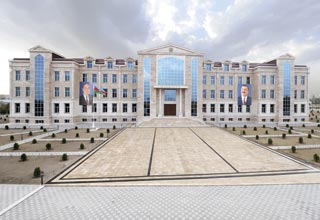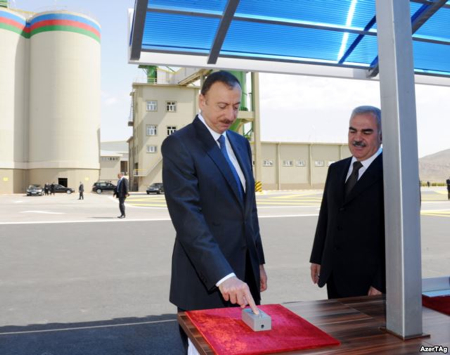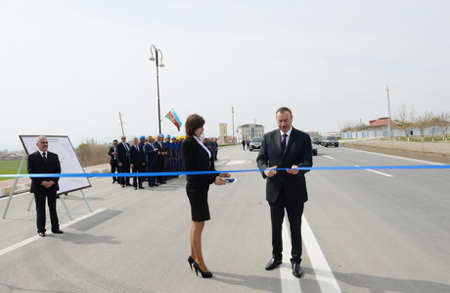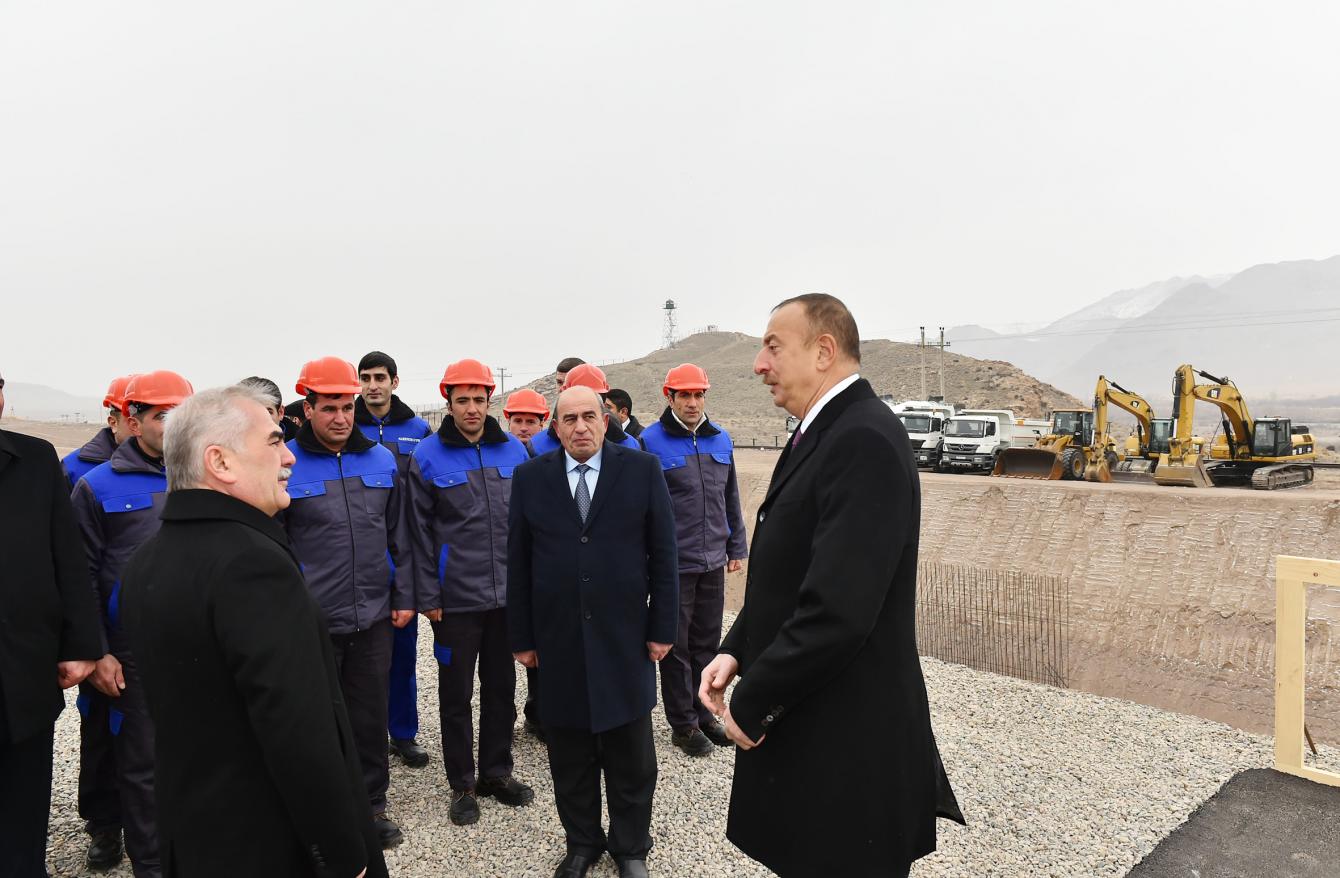General Information
Significant developments have been observed in the economic, political and social life of the Republic of Azerbaijan since the declaration of state independence. The chaotic situation emerged just after the decline of economic and political system of the Soviet Union was left far behind, the social and political stability was restored, and the economic development period was commenced.
Scope of the achievements has been considerably broadened owing to the successful continuation of economic development strategy by the President Ilham Aliyev which was set by Heydar Aliyev, the National Leader of Azerbaijan. The measures implemented according to the main dimensions of socio-economic development set by the decree of the President on "the measures for promoting the socio-economic development in the Republic of Azerbaijan" dated 24 November 2003 consolidated the achievements in this field. On the other hand, fulfillment of the development-oriented measures in all spheres of economy in the framework of separate state programs fairly raised overall efficiency. One of these programs for 2004-2008, "The State Program for the socio-economic development of the regions of the Republic of Azerbaijan" dated 11 February 2004, is of crucial importance to direct the general economic development towards different regions alongside the center. The measures regarding complete implementation of the regional investment potential, establishment of innovative industry, agriculture and service institutions, rise of employment level, improvement of education, health and other social guarantees of the people serve the economic and food security, the protection of internal market, the minimization of the dependency on import economy and several such strategic state interests.
 Thus far crucial achievements have been obtained regarding the arrangement of various directions of development of the country's economy in the framework of common state programs, the speedy economic development, the increasing role of the regions on social and economic development, and the improvement of prosperity and life standards thanks to the complex development of the regions and various spheres of economy.
Thus far crucial achievements have been obtained regarding the arrangement of various directions of development of the country's economy in the framework of common state programs, the speedy economic development, the increasing role of the regions on social and economic development, and the improvement of prosperity and life standards thanks to the complex development of the regions and various spheres of economy.
The economy and social life of the Nakhchivan AR is notable with its uniqueness on the mentioned development background. In the wake of the military aggression of the invader Republic of Armenia to Azerbaijani soils, the autonomous republic being imposed to exist under the blockade conditions of economic and transportation relations actively participates in large-scale constructive process in spite of current obstacles.
The territory of the Nakhchivan AR as a whole is mentioned as one of the domestic economic districts upon the economic and geographical division of the Republic of Azerbaijan into districts. It is, however, distinguished with its diversified structure. This situation is due to the location of the autonomous republic on the isolated geographical territory of the Republic of Azerbaijan and the necessity to face domestic demand via the creation of relevant industrial fields to this end.
The Nakhchivan AR is a developing diversified industrial and agrarian-industrial republic. Processing of agricultural produce and output of mineral products are of special place. There are electronics, metal processing, building materials and light industry. Agriculture mainly includes grain-grower, cattle-breeding, vegetable-growing and horticulture. The economic reforms were systematically carried out, the agrarian reform was concluded, and the great opportunities were created in order to develop free ownership, private property and small-scale business.
 Significant measures have been implemented so as to attain sustainable development, to stimulate the tendency towards the entrepreneurship and to support all efforts in that regard. Purposeful programs, moreover, have been worked out in this field. "The Regional Development Program of the Nakhchivan Autonomous Republic (2005-2008)" was endorsed and have been successfully implemented by the order of the Chairman of the Supreme Assembly of Nakhchivan AR in order to fulfill the relevant decree of the President of the Republic of Azerbaijan on the "endorsement of the State Program on Social and Economic Development of the Regions of the Republic of Azerbaijan (2004-2008)", as well as to increase the production of agricultural produce utilizing natural resources and local conditions, to ensure the development of processing industry, service and other infrastructure centers, and tourism, to elevate the employment level and to improve general life conditions.
Significant measures have been implemented so as to attain sustainable development, to stimulate the tendency towards the entrepreneurship and to support all efforts in that regard. Purposeful programs, moreover, have been worked out in this field. "The Regional Development Program of the Nakhchivan Autonomous Republic (2005-2008)" was endorsed and have been successfully implemented by the order of the Chairman of the Supreme Assembly of Nakhchivan AR in order to fulfill the relevant decree of the President of the Republic of Azerbaijan on the "endorsement of the State Program on Social and Economic Development of the Regions of the Republic of Azerbaijan (2004-2008)", as well as to increase the production of agricultural produce utilizing natural resources and local conditions, to ensure the development of processing industry, service and other infrastructure centers, and tourism, to elevate the employment level and to improve general life conditions.
As result of pursuing import-export policy guided by scientific principles, economic push was made for the development of production-oriented ownership, for the increasing of final produce, for the supply of domestic market with local productions and for the strengthening of production potential rest upon local materials. Such a complex approach to socio-economic development, the outcomes of fundamental reforms conducted and large-scale creative processes ensure the high-rate development and further regarding the economy and social life of the autonomous republic.
On 14 April 2009, "State Program on Socio-economic Development of the Regions of the Republic of Azerbaijan in 2009-2013" has been endorsed by the President of the Republic of Azerbaijan in order to make the progress sustainable and to effectively use existing natural resources and labor potential. The implementation of decisive measures as to development of the Nakhchivan Autonomous Republic is also considered in the second State Program. The results of 2009 and dynamic growth in the socio-economic life of the autonomous republic give a guarantee for the successful implementation of this State Program as well.
The total production exceeded 1 billion 552 million manats in Nakhchivan in 2023.  During this period, the volume of industrial output amounted to 593.9 million manats, agricultural production reached 358.4 million manats, the volume of information and communication services amounted to 34.2 million manats, paid services to the population totaled 178.2 million manats, and the average monthly wage was 689.0 manats.
During this period, the volume of industrial output amounted to 593.9 million manats, agricultural production reached 358.4 million manats, the volume of information and communication services amounted to 34.2 million manats, paid services to the population totaled 178.2 million manats, and the average monthly wage was 689.0 manats.
In 2023, the share of the non-state sector in budget revenues was 55.7 percent, while it constituted 62.4 percent in tax revenues. Financial accessibility is one of the most significant factors contributing to the rapid development of entrepreneurship. In 2023, the Entrepreneurship Development Fund of the Autonomous Republic of Nakhchivan provided state financial support on favorable terms, amounting to 6.2 million manats, for the financing of 40 investment projects, of which 84.8 percent was directed towards the production of industrial goods, 11.7 percent towards agricultural activities, and 3.5 percent towards service sectors. The dominance of small and medium-sized businesses in the economy of the Autonomous Republic has significantly increased, with the number of registered SME entities in 2023 growing by 26 percent compared to 2022.
As a result of the transparent management of real estate, budget revenues from lease agreements concluded in 2023, increased by 7.7 percent. The state registration of property rights on real estate increased by 43.6 percent, and revenues from the privatization and lease of state property increased by 2.2 times compared to the previous year.  Competitiveness was ensured in the autonomous republic by the active participation of entrepreneurs in state procurement. In 2023, more than 531 competitive procurement processes were carried out, saving 16 percent of the estimated cost of procurement.
Competitiveness was ensured in the autonomous republic by the active participation of entrepreneurs in state procurement. In 2023, more than 531 competitive procurement processes were carried out, saving 16 percent of the estimated cost of procurement.
The decree on the approval of the "State Program for the Socio-Economic Development of the Nakhchivan Autonomous Republic for 2023-2027," signed by the President of the Republic of Azerbaijan Ilham Aliyev, on June 5, 2023, focuses on shaping a favorable investment environment for entrepreneurs and transforming Nakhchivan into a primary economic center by establishing a free economic zone.
